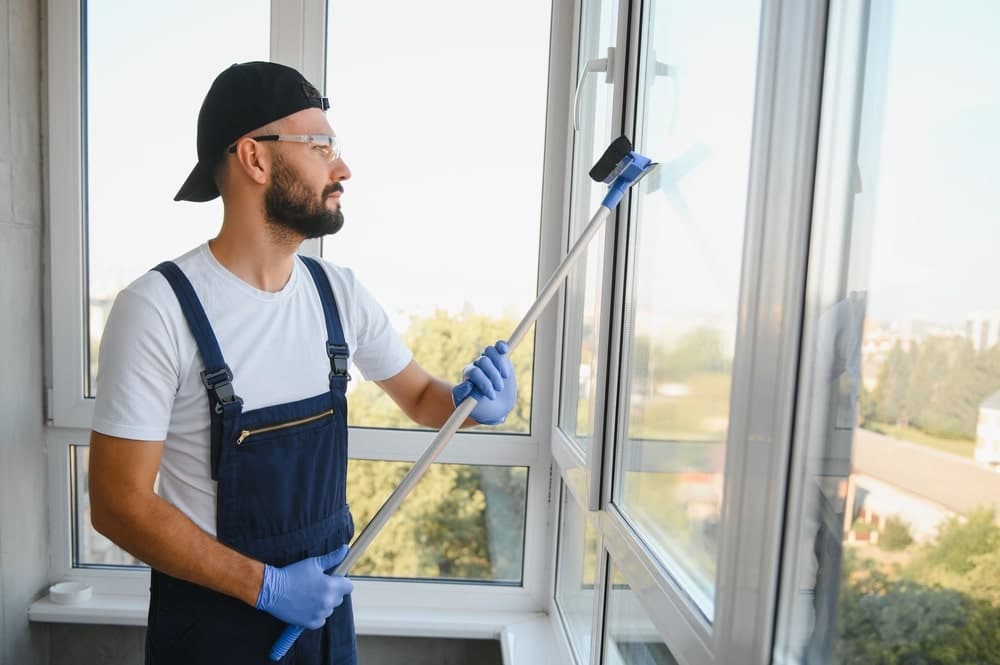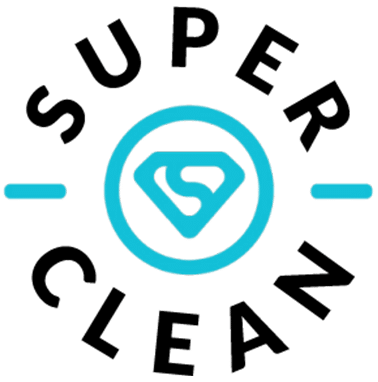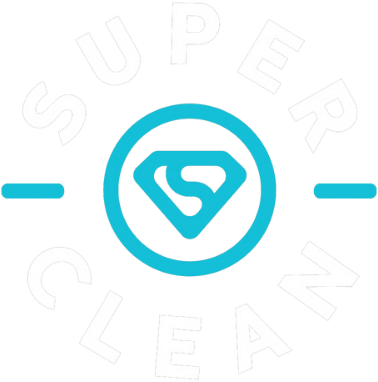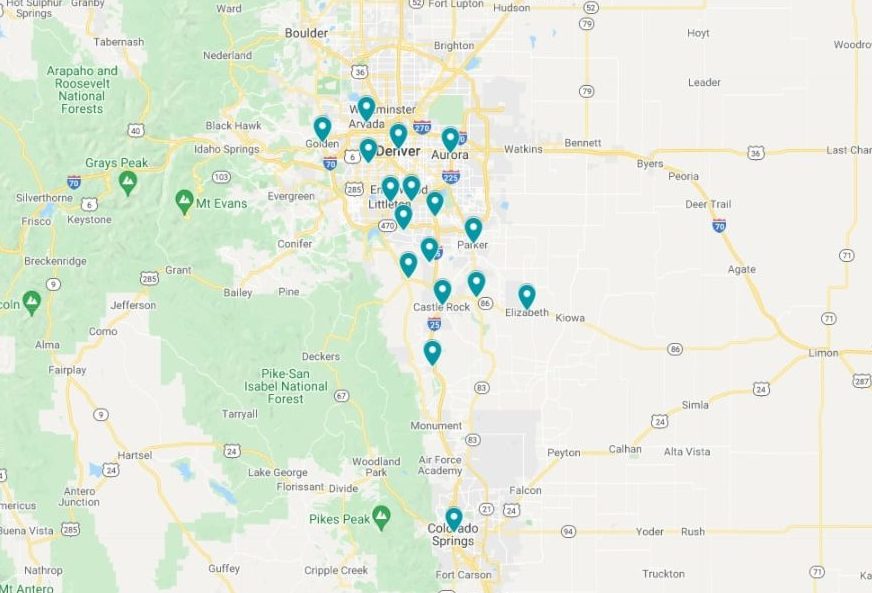
Both approaches can deliver crisp views, but they shine in different scenarios. This guide compares real-world use, cost, safety, and finish quality so window cleaning feels easier to plan in Colorado Springs, CO.
The short version: when each method wins
- Pure water pole: fastest for exterior glass above one story, safer from the ground, great on frames and mullions.
- Squeegee: precise on first-floor panes and interiors, dependable on tricky shapes, excellent in bright inspection light.
Each has a place in routine care, and many homes in Colorado Springs, CO benefit from a mix.
How pure water actually works
A resin tank removes dissolved minerals from tap water so it dries clear on glass. The brush loosens dust, pollen, and light grime while the rinse leaves no residue. This matters locally because sun and breeze can flash-dry water; mineral-free rinse prevents spotting without chemical additives.
Pros you’ll notice
- Reach: cleans upper panes, skylights, and panels over shrubs without ladders.
- Uniform frames: rinses sills and edges so everything matches.
- Safety: keeps feet on the ground, a smart move on sloped landscaping.
Limits to keep in mind
- Heavy mineral rings need separate treatment.
- Very low winter temps reduce dwell time and comfort outdoors.
- Resin costs rise with high TDS; monitor cartridges more often.
Why the squeegee still rules in many spots
A good mop-and-rubber pull gives clean lines and immediate feedback in strong light. You can see tiny arcs and correct them on the spot, which is perfect for interiors and first-floor exteriors.
Pros you’ll notice
- Detail: edges, divided lights, and French panes finish neatly.
- Bright light control: quick towel work fixes micro-streaks.
- Versatility: works in narrow alleys, under awnings, and on windy days.
Limits to keep in mind
- Ladders raise setup time and risk on uneven ground.
- Large expanses or high windows take longer compared to a pole rinse.
Finish quality: what “spotless” really means
On newer, well-kept exterior glass, pure water can look flawless once the final rinse dries. On older panes with oxidation at the edges, a squeegee detail may hide halo lines better. Interiors typically favor the squeegee because you can control drips near flooring and furniture.
Speed and access: matching method to layout
- Two-story elevations with shrubs or rock beds: pure water often wins, cutting setup time and avoiding ladder moves.
- Ground floor with French grids or bay windows: squeegee is faster and tidier.
- Skylights near eaves: a pole from the ground or a short step platform beats climbing.
Safety in the real world
Keeping feet on the ground is a strong argument for pure water poles. When ladders are required, slow down, confirm footing, and avoid leaning past rails. Stable access matters more than shaving minutes, especially on gravel or pavers.
Weather and altitude: why timing matters here
Dry air and bright sun can flash-dry solution on warm glass. Early and late hours help both methods; mid-day glare makes inspection tougher. A light breeze can push rinse water across frames, so aim the brush downward and finish with a controlled top-down rinse.
Water quality basics: TDS and resin
Spot-free drying depends on low dissolved solids. If your TDS climbs, resin exhausts quickly, and faint marks may appear. Keep a simple meter in your kit and swap or recharge resin before big exterior days.
Cost and maintenance: what adds up
- Pure water: upfront for pole, hose, and DI/RO system, plus resin refills. Faster on volume work, which can offset costs.
- Squeegee: low upfront, steady replacement of rubber and sleeves. More labor on second-story glass unless access is simple.
Mixed-method playbook
- First pass of the year: exterior pure water for frames and dust, then squeegee detail on focal panes that face the afternoon sun.
- Maintenance visits: use pure water for upper levels and squeegee for ground floor and interiors. This balance preserves speed and finish quality.
Handling stubborn problems
- Hard water rings: spot-treat with a safe mineral remover or a short vinegar dwell.
- Oxidized frames: agitate gently with a soft brush and rinse well.
- Pollen surges after wind: pre-rinse to float grit, then proceed.
Simple decision tree
- Glass above one story with clear access? Start pure water.
- Intricate grids, interior doors, or mirrors? Use squeegee.
- Mixed elevations with patio furniture below? Pole upper panes, squeegee the lower set.
- Bright mid-day inspection needed? Squeegee lets you correct on the spot.
A realistic 2-hour workflow
Walk-around and quick TDS check.
Upper exteriors with pure water, frames first, controlled top-down rinse.
Short reset to hydrate.
Ground-floor exteriors with squeegee, tidy edges and tracks.
Interiors last with drop cloths and a light towel detail.
Maintenance between full cleans
Dust returns fast after trail-heavy weekends. A light pole rinse on windward panes extends clarity without a full visit. Indoors, a quick towel on fingerprints keeps patio doors sharp, which makes the next round shorter.
Common mistakes to avoid
- Over-brushing with pure water on hot glass; let the rinse do the finish.
- Pushing pressure on old rubber; swap earlier on bright days.
- Skipping a pre-rinse when pollen stacks; that’s how fine scratches start.
Keep Exploring
Cold months on the horizon? Read next: Winter Window Cleaning in Colorado Springs, CO: Freeze-Safe Tactics.
Want a done-for-you shine?
Make the view effortless with professional Window cleaning — clear scheduling, careful detail, and results that last.







